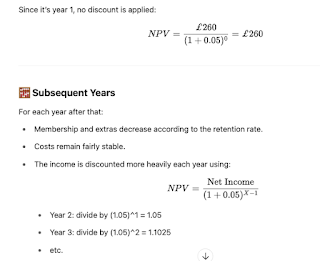Study Notes: Customer Lifetime Value (CLV)
Study Notes: Customer Lifetime Value (CLV)
1. Introduction to CLV
Customer Lifetime Value (CLV) is a prediction of the net profit attributed to the entire future relationship with a customer. It is a core metric in Customer Relationship Management (CRM), helping businesses evaluate the long-term impact of customer acquisition, retention, and referral strategies (Buttle & Maklan, 2019).
-
Focus: Relationship value, not just individual transactions
-
Importance: Assesses the cost-effectiveness of retention vs. acquisition
-
Strategic Use: Drives segmentation, personalisation, and budgeting decisions
2. When Is CLV Easy to Calculate?
CLV is easier to calculate in industries with predictable customer behaviours:
-
Easier Sectors: Banking, telecoms, credit cards, insurance (recurring and stable revenue)
-
Harder Sectors: Fashion, groceries, travel (irregular or seasonal purchases)
3. CLV Influencing Factors
Key variables influencing CLV include:
-
Customer retention rate (lifespan)
-
Revenue per customer
-
Referral value
-
Cost of servicing customers
-
Discount rate to reflect inflation/capital cost
4. CLV Formula (Present Value Basis)
Customer Lifetime Value = Present value of all net margins earned from a customer over time
(Buttle & Maklan, 2019)
Discounting to present value accounts for the time value of money:

Where:
-
r = discount rate (e.g. 5%)
-
X = year of income
5. CLV Cohort-Based Example: Sports Club
| Year | Remaining Customers | Membership Income | Additional Sales | Admin Cost | Retention & Acquisition Cost | Net Income | NPV (5%) |
|---|---|---|---|---|---|---|---|
| 1 | 1.00 | £520 | £100 | £30 | £300 | £260 | £260.00 |
| 2 | 0.85 | £442 | £90 | £30 | £40 | £462 | £410.48 |
| 3 | 0.72 | £374 | £70 | £30 | £40 | £374 | £321.94 |
| 4 | 0.61 | £320 | £50 | £30 | £40 | £300 | £247.10 |
| 5 | 0.52 | £270 | £30 | £30 | £40 | £230 | £201.09 |
-
Total CLV (NPV 5 Years): £1,441
-
Average Annual Return per Customer: £288
6. Assumptions and Considerations
-
Constant annual membership fee: £520
-
Admin and retention costs fixed
-
No price inflation assumed
-
Retention rate: 85%
-
Income includes both direct (fees) and indirect (sales)
7. Preview: Impact of Lower Retention
A recalculation with a 60% retention rate shows a much lower CLV:
| Year | Remaining Customers | Net Income | NPV (5%) |
|---|---|---|---|
| 1 | 1.00 | £260 | £260.00 |
| 2 | 0.60 | £357 | £323.81 |
| 3 | 0.36 | £293 | £252.65 |
| 4 | 0.22 | £237 | £195.00 |
| 5 | 0.13 | £188 | £164.89 |
-
Total CLV (NPV 5 Years): £1,196.35
-
CLV Decrease: £244.65 (–17%) due to 25% drop in retention
8. Customer Referrals and Product Characteristics
According to Buttle and Maklan (2019), customer referrals are a critical factor in customer acquisition and retention. CLV calculations can be significantly impacted by the referral value added by existing satisfied customers. Customers often seek referrals in situations involving:
a. High Cost or Financial Commitment
-
Examples: Travel packages, electronics, vehicles
-
Reason: Greater financial risk → reliance on trusted advice
b. Personal or Emotional Impact
-
Examples: Healthcare, education, life insurance
-
Reason: High involvement → more likely to trust word-of-mouth
c. Hard-to-Evaluate Services
-
Examples: Hotels, salons, service providers
-
Reason: Quality is intangible → peer recommendations are trusted
d. Complex or Technical Products
-
Examples: Software, digital tools, fintech
-
Reason: Users rely on social proof to make sense of complicated offerings
e. Crowded Markets with Low Differentiation
-
Examples: Food delivery apps, cosmetics, clothing
-
Reason: Reviews provide a shortcut to navigate choices
"Customers become advocates when they are satisfied and loyal, and when they believe their recommendations will help others" (Buttle & Maklan, 2019, p. 39).
9. Strategic Insights for Marketers
-
Referrals increase CLV by reducing acquisition costs and bringing in high-value customers
-
Retention marketing should be prioritised, as it stabilises revenue and boosts referrals
-
Segmentation based on referral value can improve ROI on marketing spend
10. Conclusion
This lecture and the associated reading demonstrate the strategic value of CLV as a central CRM metric. As supported by Buttle and Maklan (2019), retention and referral activities aren't just soft marketing goals—they are financially measurable imperatives. Companies that invest in long-term customer relationships and advocacy stand to increase profitability significantly.
Reference
Buttle, F. and Maklan, S. (2019) Customer Relationship Management: Concepts and Technologies. 4th edn. London: Routledge.
Comments
Post a Comment